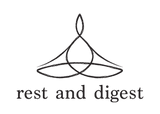Using a block
Our yoga blocks can help support your many yoga poses and movements - asana, to help take stress off your back, and your muscles and ligaments. You don't have to use yoga props or bolsters when you do yoga - but it helps support and guide you when you otherwise may have difficulty carrying out certain moves. It is important to remember that once you go on your mat, this becomes your practice. That means that you must enter poses in the safest way for your body and not compare yourself to what your neighbour is doing. This is why the yoga block is an essential prop in yoga. It creates options for you to move through your practice in a safe and supported way.
Why use it?
The purpose of the block in yoga asana is essentially to bring the floor closer to your body. Whilst many believe yoga is a practice for the flexible, it is in fact a practice for every body.
Placing the block on the floor as you reach down to touch the mat means you do not have to reach as far but will still receive the benefit of stretching your leg muscles and your back muscles. Another use of the block is to rest your sacrum while in bridge pose to provide support and a sense of balance and safety.
Benefit during yoga practice
The beauty of a yoga block is that it enables you to use 3 different heights depending on your needs. For example, when doing triangle pose facing the left side of the room, you may be able to reach your fingers to the block when it is placed on it's flat side ie the lowest height. However, when facing the right side of the room, you may find that the most comfortable position for you is when the block is at it's highest position.
Yin yoga
If you have practiced yin yoga before you will know that a bolster and a couple of cork blocks are never far away. As yin yoga involves long held poses that stretch connective tissues, it is important that the pose is well supported. Placing a block under a hip or shoulder could be the difference between feeling nothing, feeling pain or feeling the right amount of stress in the target area. When undergoing my Yin Yoga teacher training, my teacher Dr Karina Smith emphasised the need for us as teachers to make it clear that the use of props is not a weakness.
Enhance your practice
These blocks should not be regarded as tools for those who are not proficient in yoga. In fact, finding balance and ease within the pose is such an important aspect of yoga that most yoga studios you will attend will provide you with yoga blocks.
Grabbing a couple of yoga blocks is the first thing I do when preparing to practice yoga and I use them throughout my asana and meditation practice. I use the cork block to sit on at the beginning of the practice to create space between my hips and the floor and take the pressure of my knees as I sit crossed legged. I will sometimes reach for the block to rest my head while enjoying child's pose for an extended period. The block provides you with options to find comfort and ease in your poses. A crucial aspect in your yoga practice.

















